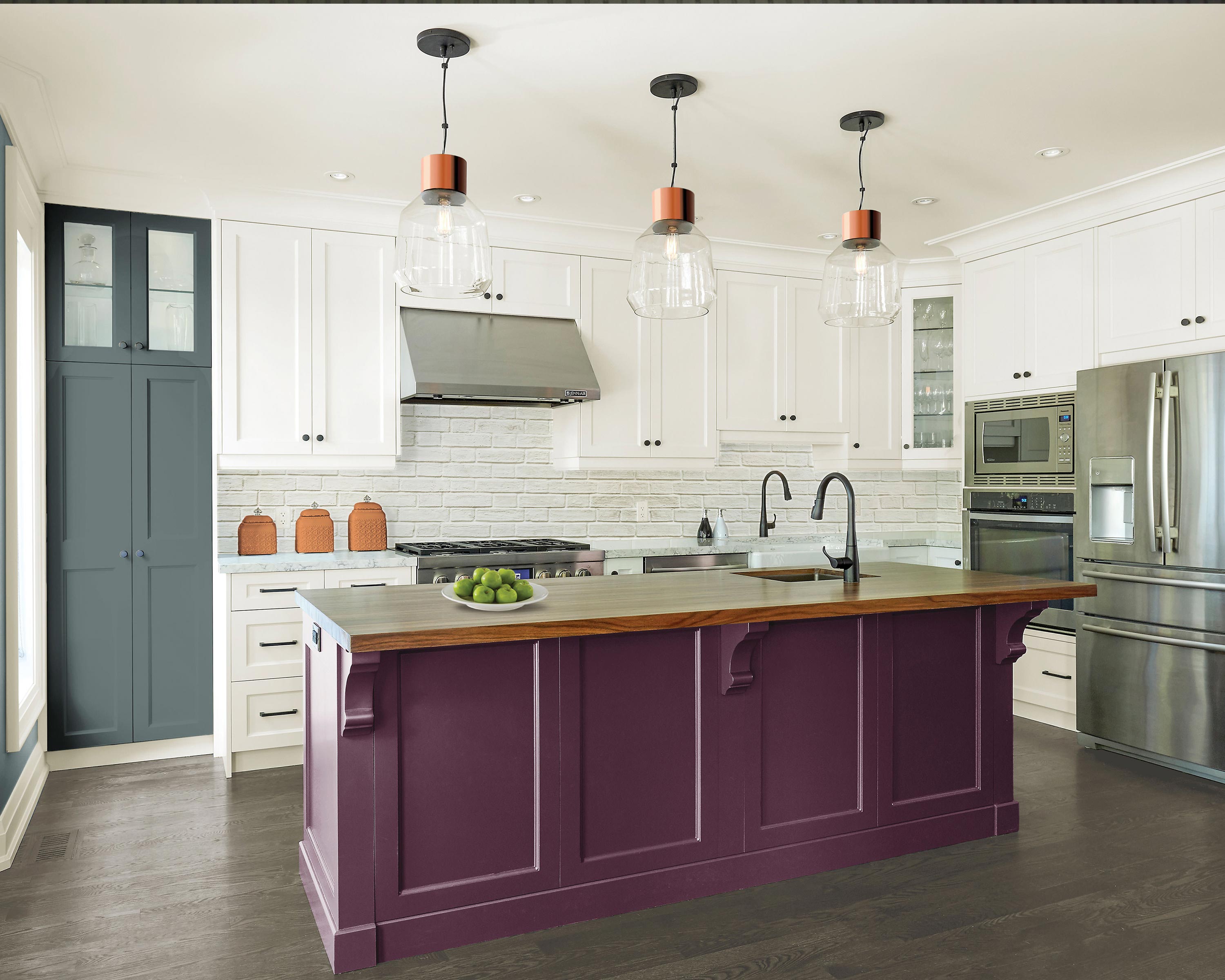Eco-Friendly With Ease
1. Wash the walls using soap (such as a mild dishwashing detergent), water and a soft cloth. A gently cleansing once a year helps prolong the lifespan of painted surfaces.
2. Avoid waste by accurately assessing the quantity of paint you require using a reliable surface calculator:
3. Choose VOC-free paints as they reduce odour considerably and enhance ambient air quality during application.
4. To avoid paint building up on the metal portion of the brush, dip your brush in water and then shake well before you start to paint. This quick step facilitates cleaning up and helps extend the lifespan of your brushes.
5. At break time, rather than rinsing your brush and wasting water, simply wrap your brush in plastic wrap or a piece of aluminum foil. Your brush will remain moist and workable for a good hour or so.
6. Before stowing your paint container, clean off both the lid and rim, removing any traces of paint. Secure the lid in place and store the container in a dry, temperature-controlled location where there is no risk of freezing.
7. Dispose of waste paint responsibly. Visit www.regeneration.ca to locate the nearest drop-off facility.
8. When outdoor temperatures moderate, freshen up the exterior of your home by applying a fresh coat of paint to mouldings and trim. Choose colours which blend with your home’s architectural details.

Colour Confidential
When the time comes to repaint a room, it is important to consider both colour and finish with care. Selection of the appropriate finish – flat, velvet, platinum, pearl or gloss, will depend on the intended use of the room, the level of durability required and the atmosphere that one seeks to create.
Flat and Velvet Finishes for Enhanced Beauty
Flat and velvet finishes lend depth and richness to any colour. They help create a warm, inviting ambience which makes them particularly well suited for use in the living room, dining room or master bedroom.
Flat finishes are especially recommended for irregular walls and ceilings as they conceal the majority of imperfections. Not as readily washable, flat finishes are appropriate for rooms with moderate traffic. Platinum and pearl finishes for enhanced versatility.
Easy to clean and featuring a slightly higher brilliance factor of between 8% and 12%, platinum finishes are extremely popular and suitable for all rooms in the house, kitchens and bathrooms included.
Pearl finishes, with a brilliance factor of between 15% and 20%, are just as versatile although slightly glossier and harder wearing. Pearl finishes are recommended for doors, trim, baseboards and moulding.
Semi-Gloss for Enhanced Effect
Highly durable, these more lustrous finishes, with a brilliance factor of between 45% and 60%, are ideal for highlighting architectural elements and creating contrasts or lighting effects. As brush and roller marks may tend to be more apparent, it is important to use the proper tools and apply semi-gloss paints with care. A word of caution: the brilliance factor can have a cooling effect on overall ambience.
Gloss for a Self-Cleaning Finish
High sheen paint with a brilliance factor of greater than 85% is available only for exterior use. As the mirror finish literally repels dirt and grime, has dubbed it ‘self-cleaning’. Rainwater indeed tends to cleanse painted surfaces naturally.
Wood Works
If it’s wood that needs a little pick me up or some long-lasting protection against the elements, here are some sure-fire tips and practical advice from the professionals.
One of the biggest differences between painting and staining is colour penetration. With staining, the colour penetrates into wood in contrast to paint which adheres to the surface. choice of excellence for imparting long-lasting protection and enhancing the beauty of interior and exterior wood surfaces.
Preparing the Surface to be Stained
Remove all layers of paint or stain that are tending to crack or peel off. Use either a scraper or pressure washer. If using a pressure washer, move the nozzle quickly over the surface to avoid damaging the wood. Clean thoroughly. In the case of previously painted or stained wood, clean with a solution of trisodium phosphate. For new or stripped surfaces, use a 5:1 water and bleach solution. Brush to remove grime. Rinse and allow to dry. Sand the surface, except in the instance of treated wood, with 80 grade sandpaper to open the pores of the wood. Remove dust. Caution! Wood surfaces that have been painted or treated with a solid-colour stain must be stripped bare if you are planning to apply a semi-transparent stain.
New pressure-treated wood surfaces must generally be left exposed to the elements for at least a year prior to being stained.
Tip: A surface is ready to be stained if it absorbs water.
Obtaining the Right Colour
The colour of a semi-transparent stain will vary based on the type of wood upon which it is applied. To obtain the desired colour or shade, test on a small, less visible section of the surface to be stained.
Semi-Transparent or Solid-Colour Stain: Which Should I choose?
Semi-transparent stain imparts colour without masking the grain of the wood. Semi-transparent stain is recommended for new wood surfaces or surfaces previously stained with semi-transparent stain. Semi-transparent stain is not recommended for application on previously varnished or solid colour stained wood surfaces.
Solid-colour stain has the appearance of paint while enhancing the texture of the wood. Solid-colour stain is ideal for wood surfaces previously treated with a solid-colour stain or with apparent imperfections, as well as projects involving different types of wood.
Editorial courtesy of Laurentide Paint a part of Sherwin-Williams Diversified and available at Castle Building Centres locations.
